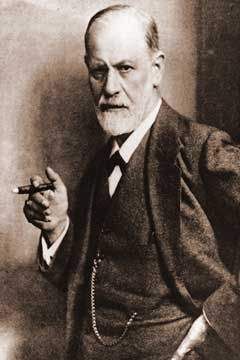Ознакомительная версия.
Sandier, J.; Dare, C.; and Holder, A. (1972). Frames of reference: The historical context and phases in the development of psychoanalysis. Brit. j. Med. Psychol., 45:133-142.
Sandier, J., and Freud, A. (1985). The analysis of defense: The ego and the mechanisms of defense revisited. New York: Int. Univ. Press.
Sandier, J.; Holder, A.; and Meers, D. (1963). The ego ideal and the ideal self. Psychoanal. Study Child, 18:139-158.
Sandier, J., and Joffe, W. G. (1969). Towards a basic psycho-analytic model. Int. J. Psychoanal., 50:79-90.
Sandier, J., and Rosenblatt, B. (1962). The concept of the representational world. Psychoanal. Study Child, 17:128-145.
Sandier, J., and Sandier, A.-M. (1978). On the development of object relationships and affects, Int. J. Psychoanal., 59:285-296.
Sarnoff, C. (1976). Latency. New York: Aronson.
Schafer, R. (1960). The loving and beloved superego in Freud's structural theory. Psychoanal. Study Child, 15:163-190.
Schafer, R. (1974). Problems in Freud's psychology of women. J. Amer. Psychoanal. Assn., 22:459-485.
Schafer, R. (1976). A new language for psychoanalysis. New Haven: Yale Univ. Press.
Scharfman, M. (1988). History of child analysis. Paper presented to workshop on the Significance of Child and Adolescent Analysis for Clinical Work with Adults. American Psychoanalytic Association, New York City, November.
Schulman, A. H., and Kaplowitz, C. (1977). Mirror – image response during the first two years of life. Developmental Psychology, 10:133-142.
Schur, M. (1960). Discussion of Dr. John Bowlby's paper. Psycho-anal. Study Child, 15:63-84.
Schur, M. (1966). The id and the regulatory principles of mental functioning. New York: Int. Univ. Press.
Schur, M. (1969). Affects and cognition, Int. J. Psychoanal., 50:647-653.
Schwartz, A. (1987). Drives, affects, behavior – and learning: Approaches to a psychobiology of emotion and to an integration of psychoanalytic and neurobiologic thought. Amer. Psychoanal. Assn., 35:467-506.
Schwartz, L. (1978). Book review: The restoration of the self. Psychoanal. Q., 47:436-443.
Segal, H. (1978). On symbolism, int.]. Psychoanal., 59:315-319.
Segal, H. (1979). Klein: Theories and techniques of the pioneer of child analysis. London: Harvester Press.
Settlage, C.F. (1971). On the libidinal aspect of early psychic development and the genesis of infantile neurosis. In Separation – individuation: Essays in honor of Margaret S. Mahler, ed. J. B. McDevitt and C. F. Settlage. New York: Int. Univ. Press, pp. 131-154.
Settlage, C. F. (1975). On the aggressive aspects of early psychic development and the genesis of the infantile neurosis. Unpublished paper.
Settlage, C. F. (1980). The psychoanalytic theory and understanding of psychic development during the second and third years of life. In Infancy and early childhood. Vol. I of The course of
life, ed. S. 1. Greenspan and G. H. Pollock. Publication No. (ADM) 80-786. Washington, D.C.: DHHS, pp. 523-539.
Settlage, C. R; Curtis, Z.; Lozoff, M.; Silberschatz, G.; and Simburg, E. (1988). Conceptualizing adult devclopment.y. Amer. Psychoanal. Assn., 36:347-370.
Settlage, C. R; Kramer, S.; Belmont, H. S.; et al. (1977). Child analysis. In Psychoanalytic education and research: The current situation and future possibilities, ed. S. Goodman. New York: Int. Univ. Press, pp. 49-102.
Shapiro, T. (1979). Clinical psycholinguistics. New York: Plenum.
Shapiro, Т., and Perry, R. (1976). Latency revisited. Psychoanal. Study Child, 31:79-105. Shengold, L. (1980). Some reflections on a case of mother – adolescent son incest. Int. J. Psychoanal., 61:461-476.
Shengold, L. (1989). Soul murder. New Haven: Yale Univ. Press.
Shereshefsky, P. M., and Yarrow, L. J. (1973). Psychological aspects of a firstpregnancy and early postnatal adaptation. New York: Raven Press.
Shopper, M. (1979). The (re)discovery of the vagina and the importance of the menstrual tampon. In Female adolescent development, ed. M. Sugar. New York: Bninner/Mazel, pp. 214-233.
Sifneos, P. (1974). A reconsideration of psychodynamic mechanisms inpsychosomatic symptom formation in view of recent clinical observations. Psychother. Psychosom., 24:151-155.
Silverman, M. A. (1971). The growth of logical thinking: Piaget's contribution to ego psychology. Psychoanal. Q., 40:317-341.
Silverman, M. A. (1981). Cognitive development and female psychology. J. Amer. Psychoanal. Assn., 29:581-605.
Slap, J. (1977). The eroding concept of intrapsychic conflict. Int. J. Psychoanal. Psychother., 6:469-477.
Slap, J. W., and Levine, R J. (1978). On hybrid concepts in psychoanalysis. Psychoanal. Q., 47:499-523.
Socarides, C. W. (1978). Homosexuality. New York: Aronson.
Solnit, A.J. (1979). Psychosexual development: Three to five years. In Basic handbook of child psychiatrj. Vol. I, ed. J. D. Noshpitz et al. New York: Basic Books, pp. 178-183.
Solnit, A. J. (1987a). A psychoanalytic view of play. Psychoanal. Study Child, 42:205-219.
Solnit, A. J. (1987b). Review of The interpersonal world of the infant, by Daniel Stern. J. Amer. Psychlat. Assn., 144:1508-1509.
Solnit, A. J., and Neubauer, P. B. (1986). Object constancy and early triadic relationships. Amer. Acad. Child Psychlat., 25:23-29.
Sorce, J. F; Ernde, R. N.; and Klinnert, M. (1981). Maternal emotional signaling: Its effect on the visual – cliff behavior ofone – vear – olds. Paper presented at the meeting of the Society for Research in Child Development, Boston, Mass.
Spillius, E. B. (1983). Some developments from the work of Melanie Klein. Int. J. Psychoanal., 64:321-332.
Spitz, R. A. (1945). Hospitalism: An inquiry into the genesis of psychiatric conditions in early childhood. Psychoanal. Study Child, 1:53-72.
Spitz, R. A. (1946a). Anaclitic depression: An inquiry into the genesis of psychiatric conditions in early childhood. Psychoanal. Study Child, 2:313-342.
Spitz, R. A. (1946b). Hospitalism: A follow – up report. Psychoanal. Study Child, 2:113-117.
Spitz, R. A. (1947). Grief, a peril in infancy. Film, New York Film Library. Cited in Spitz and Cobliner, 1965.
Spitz, R. A. (1950). Anxiety in infancy: A study of its manifestations in the first year of life. Int. J. Psychoanal., 31:138-143.
Spitz, R. A. (1952). Authority and masturbation: Remarks on bibliographical investigation. Psychoanal. Q., 21:490-527.
Spitz, R. A. (1953). Aggression: Its role in the establishment of object relations. In Drives, affects, behavior, ed. R. Loewenstein. New York: Int. Univ, Press, pp. 126-138.
Spitz, R. A. ( 1957). No and yes: On the genesis of human communication. New York: Int. Univ. Press.
Spitz, R. A. (1958). On the genesis of superego components. Psychoanal. Study Child, 13:375-404.
Spitz, R. A. (1959). A genetic field theory of ego formation: Its implications for Pathology. New York: Int. Univ. Press.
Spitz, R. A. (1960). Discussion of Dr. John Bowlby's paper. Psychoanal. Study Child, 15:85-94.
Spitz, R. A. (1962). Auterotism reexamined. Psychoanal. Study Child, 17:283-315.
Spitz, R. A. (1963). Life and the dialogue. In Counterpoint: Libidinal object and subject, ed. H. S. Gaskill. New York: Int. Univ. Press, pp. 154-176.
Spitz, R. A. (1964). The derailment of dialogue: Stimulus overload, active cycles, and the completion gradient. Amer. Psychoanal. Assn., 12:752-775.
Spitz, R. A. (1965). The evolution of dialogue. In Drives, affects, behavior. Vol. 2, ed. M. Schur. New York: Int. Univ. Press, pp. 170-1.90.
Spitz, R. A., and Cobliner, W. G. (1965). Thefirstyear of life. New York: Int. Univ. Press.
Spitz, R. A.; Ernde, R. N.; and Metcalf, D. R. (1970). Further prototypes of ego formation: A working paper from a research project on early development. Psychoanal. Study Child, 25:417-460.
Spitz, R. A., and Wolf, К. М. (1946). The smiling response. Genetic Psychol. Mono., 34:57-125.
Spitz, R. A., and Waif, K. M. (1949). Auterotism: Some empirical findings and hypotheses on three of its manifestations in the first year of life. Psychoanal. Study Child, 3/4:85-120.
Spruiell, V. (1975). Three strands of narcissism. Psychoanal. (44:577-595.)
Spruiell, V. (1979). Alterations in the ego-ideal in girls in mid-adolescence. In Female adolescent development, ed. Sugar. New York: Brunner/Mazel, pp. 310-329.
Spruiell, V. (1981). The self and the ego. Psychoanal. Q., 50:319-344.
Stechler, G., and Halton, A. (1987). The emergence of assertion and aggression during infancy: A psychoanalytic systems approach. Amer. Psychoanal. Assn., 35:821-838.
Stechler, G., and Kaplan, S. (1980). The development of the self. Psychoanal. Study Child, 35:85-105.
Steele, B. F. (1970). Parental abuseof infants and small children. In Parenthood, ed. E. J. Anthony and T. Benedek. New York: Little, Brown, pp. 449-477.
Steele, B. F. (1983). The effect of abuse and neglect on psychological development. In Frontiers of infant psychiatry, ed. J. D. Call, E. Galenson, and R. L. Tyson. New York: Basic Books, pp. 235-244.
Steele, B. E, and Pollock, С. В. (1968). A psychiatric study of parents who abuse infants and small children. In The battered child, ed. R. E. Heifer and С. Н. Kempe. Chicago: Univ. of Chicago Press, pp. 103-147.
Stein, M. H. (1979). Book Review: The restoration of the self by Heinz Kohut. Amer. Psychoanal. Assn., 27:665-680.
Sterba, R. F. (1942). Introduction. Psychoanalytic theory of the libido, 3rd ed. New York: Brunner/Mazel, 1968.
Stern, D. N. (1974a). Mother and infant at play: The dyadic interaction involving facial, vocal, and gaze behaviors. In The effect of the infant on its careglver. ed. M. Lewis and L. Rosenblum. New York: Wiley, pp. 187-213.
Stern, D. N. (1974b). The goal and structure of mother-infant play. J. Amer. Acad. Child Psychlat., 13:402-421.
Stern, D. N. (1977). The first relationship: Mother and infant. Cambridge: Harvard Univ. Press. Stern, D. N. (1984). Affect attunement, in Frontiers of infant psychiatry. Vol. 2, ed. J. D. Call, E. Galenson, and R. L. Tyson. New York: Basic Books, pp. 74-85.
Stern, D. N. (1985). The interpersonal world of the infant. New York: Basic Books.
Stern, D. N.; Barnett, R. K.; and Spieker, S. (1983). Early transmission of affect: Some research issues. In Frontiers of infant psychiatry, ed. J. D. Call, E. Galenson, and R. L. Tyson. New York: Basic Books, pp. 74-85.
Stoller, R. J. (1968a). Sex and gender: On the development of masculinity and femininity. New York: Science House.
Stoller, R. J. (1968b). The sense of femaleness. Psychoanal. Q., 37-42-55.
Stoller, R. J. (1976). Primary femininitv.y. Amer. Psychoanal. Assn., 24 (Suppi.): 59-78.
Stoller, R. J. (1979). Fathers of transsexual children. J. Amer. Psychoanal. Assn., 27:837-866.
Stoller, R.J. (1985). Presentations of gender. New Haven: Yale Univ. Press.
Stolorow, R. D., and Lachmann, F. M. (1978). The developmental prestagcs of defenses: Diagnostic and therapeutic implications. Psychoanal. ()., 47:73-102.
Strachey, J. (1961). Editor's introduction. In S.E., 19:3-11.
Sutherland, J. D. (1980). The British object relations theorists: Balint, Winnicott, Fairbairn, Guntrip.y. Amer. Psychoanal. Assn., 28:829-860.
Tennes, K., and Lampi, E. (1964). Stranger and separation anxiety in infancy. J. Nerv. Merit. Dis., 139:247-254.
Ticho, E. A. (1982). The alternate schools and the self. J. Amer. Psychoanal. Assn., 30:849-862.
Ticho, G. (1976). Female autonomy and young adult women. Amer. Psycho-anal. Assn., 24:139-156.
Tolpin, M. (1971). On the beginnings of a cohesive self: An application of the concept of transmuting internalization to the study of the transitional object and signal anxiety. Psychoanal. Study Child, 26:316-352.
Tolpin, M. (1978). Self-objects and oedipal objects. Psychoanal. Study Child, 33:167-184.
Tornkins, S. S. (1962). The positive affects. Vol. 1 of Affect, imagery, consciousness. New York: Springer.
Tornkins, S. S. (1963). The negative affects. Vol. 2 of Affect, imagery, consciousness. New York: Springer.
Tornkins, S. S. (1970). Affect as the primary motivational system. In Feelings and emotions: The Loyola Symposium, ed. M. B. Arnold. New York: Academic Press, pp. 101 – 110.
Tornkins, S. S. (1978). Script theory: Differential magnification of affects. In Nebraska Symposium on Motivation. Vol. 26, ed. E. H. Howe, Jr., and R. A. Diestbier. Lincoln: Univ. of Nebraska Press, pp. 201-236.
Tornkins, S. S. (1981). The quest for primary motives: Biography and autobiography of an idea. Personal. Soc. Psychol., 41:306-329.
Tronick, E.; Als, H.; Adamson, L.; Wise, S.; and Brazelton, Т. В. (1978). The infant's response to entrapment between contradictory messages in face—to—face interaction. J. Amer. Acad. Child Psychiat., 17:1-13.
Tronick, E.; Als, H.; and Brazelton, Т. В. (1977). The infant's capacity to regulate mutuality in face-to-face interaction. J. Communication, 27:74-80.
Tronick, E. Z., and Gianino, A. (1986). Interactive mismatch and repair. Zero to Three, 6:1-6.
Tyson, P. (1978). Transference and developmental issues in the analysis of a prelatency child. Psychoanal. Study Child, 33:213-236.
Tyson. P. (1980). The gender of the analyst: In relation to transference and countertransference manifestations in prelatency children. Psychoanal., 35:321-338.
Tyson, P. (1982a). A developmental line of gender identity, gender role and choice of love object. Amer. Psychoanal. Assn., 30:59-84.
Tyson, P. (1982b). The role of the father in gender identity, urethral eroticism, and phallic narcissism. In On fathers: Observations and reflections, ed. S. Cath, A. Glirwitt, and J. Ross. Boston: Little, Brown, pp. 175-187.
Tyson, P. (1986a). Female psychological development. Ann. Psychoanal., 14:357-373.
Tyson, P. (1986b). Male gender identity: Early developmental roots. Psychoanal. Rev., 73:405-425.
Tyson, P. (1988). Psychic structure formation: The complementary roles of affects, drives, object relations, and conflict. J. Amer. Psychoanal. Assn., 36 (Suppl.):73-98.
Tyson, P. (1989a). Two approaches to infant research: A review and integration. In The significance of infant observational research for clinical work with children, adolescents and adults, ed. S. Dowling and A. Rothstein. Madison, Conn.: Int. Univ. Press, pp. 3-21.
Tyson, P. (1989b). Infantile sexuality, gender identity, and obstacles to oedipal progression. J. Amer. Psychoanal. Assn., 37:1051-1069.
Tyson, P. (in press). The adolescent process and adult treatment. The significance of child and adolescent analysis for clinical work with adults, ed. S. Dowling and A. Rothstein. New York: Int. Univ. Press.
Tyson, P., and Tyson, R. L. (1984). Narcissism and superego development. J. Amer. Psychoanal. Assn., 32:75-98.
Tyson, R. L. (1983). Some narcissistic consequences of object loss: A developmental view. Psychoanal. Q., 52:205-224.
Tyson, R. L. (1986). The roots of psychopathology and our theories of development. Amer. Acad. Child Psychot., 25:12-22.
Tyson, R. L. (1989). Psychological conflict in childhood: Adevelopmental view. Paper presented at the Seminar for Clinicians, American Psychoanalytic Association, New York.
Tyson, R. L. (in preparation). The psychoanalysts of the relatency child.
Ознакомительная версия.



